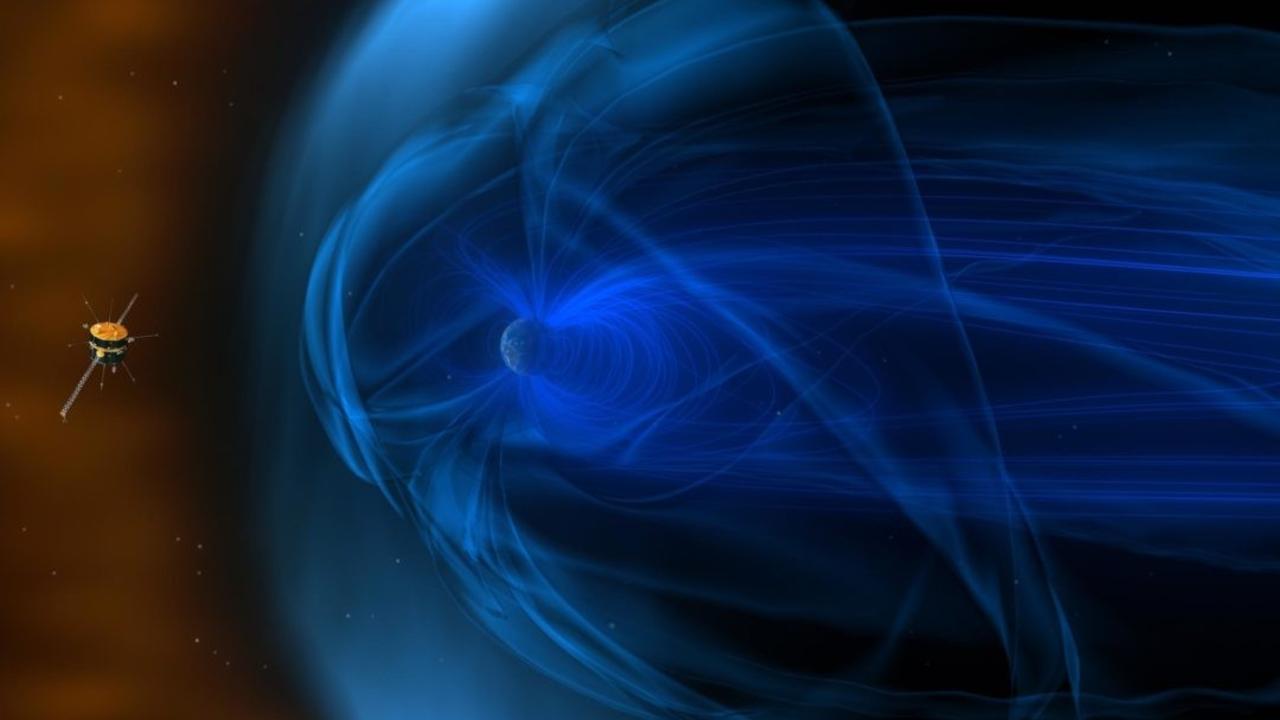Science News
& Faculty Articles
Scientists Created An Acoustic Tractor Beam

It is remarkable what can be achieved with acoustic waves. During the last two decades, scientists have demonstrated photon creation with the sonoluminescence effect, acoustic levitation and sound hologram. Acoustic vortices are another interesting effect. They have been extensively studied for their ability to trap particles and recently a team achieved the stable three-dimensional trapping of Rayleigh particles (i.e., particle with a radius smaller than the wavelength a λ).
These acoustic vortices are wave fields with a screw dislocation in the phasewave front and an amplitude null on the axis pin. These helical wavefronts can be generated using various methods among which stands out the use of phased array systems because they allow to electronically control the acoustic beam by means of the application of a given delay law to the array elements.
Acoustic researchers had been frustrated by the size limit for years, so it’s satisfying to...
Panpsychism: Theories That Consciousness is Integral to Cosmos at the Most Fundamental Level Gaining Credibility

Article by William Brown, Resonance Science Foundation Research Scientist
Conventionally consciousness is explained as emerging from electrochemical computational activity of cells in complex neural networks. Prima facie, this is a logical theory as sensory inputs can be de-constructed into data / information—computations are what sorts and processes data—and thus the computational activity of the brain produces phenomenal experiences from sensory data. The only problem is that it is not at all clear how a series of computations can produce phenomenal experience, that aspect of consciousness that is the observer—the experiencer of sensations and mental qualia. Undoubtedly, neuromorphic computations can result in machine learning, and this is most likely an integral aspect of the process of synaptic remodeling (plasticity) that occurs in the brain as one learns.
However, the ability to process data input, execute a response, and optimize that response...
Unified Origin of High-Energy Cosmic Particles Could Be Black Hole Jets

Article by Dr. Amira Val Baker, Astrophysicist, Resonance Science Foundation Research Scientist
Cosmic rays can mean any high energy from the cosmos and were only referred to as rays for historical reasons – in that they thought cosmic rays were electromagnetic radiation. However generally cosmic rays refer to high energy particles with mass whereas high energy in the form of gamma rays and/or X-rays are photons. These cosmic particles were discovered in 1912 by Victor Hess when he ascended to 5300 meters above sea level in a hot air balloon and detected significantly increased levels of ionization in the atmosphere.
Ultra-High Energy Cosmic Rays (UHECRs) are extremely energetic sub-atomic particles with energies of the order 100 PeV (that is 100,000 trillion electron volts). Their origin has long remained a mystery. However, an intriguing coincidence in the energy generation rates of UHECRs, cosmic neutrinos and gamma rays are comparable – indicating a unified picture....
Egyptian Stone Predates the Sun

By Dr. Amira Val Baker, Resonance Science Foundation Astrophysicist
Recent analysis of a stone found in the Libyan Desert Glass area of southwest Egypt, has sparked debate and a rethink of the current consensus on the formation of the solar system.
In a study, due to be published next month, a team of international researchers announced the resulting analysis of a stone that was subsequently named Hypatia after the ancient female astronomer of Alexandria.
Utilizing techniques from electron scanning microscopy, to proton induce X-ray emission and micro-Raman spectroscopy – the results revealed compounds not found anywhere on our planet, solar system or any known meteorite. As well, a lack of silicates was found which sets it apart from interplanetary dust particles and all known cometary material. Previous analysis of noble gas and nitrogen isotope studies suggest an extraterrestrial origin, which along with these new results strongly suggests a pre-solar origin and could...
Invention of an Essential Component Part for Quantum Computers

Article by Dr. Olivier Alirol, Physicist, Resonance Science Foundation Research Scientist
One difficulty of making quantum systems is because the qubits have to be maintained coherent during the whole process. Thus, due to the current technology, the qubits must be very close to each other, about 10 to 20 nm apart, in order to communicate. This leaves little room to place the electronics needed to make a quantum computer work. And one of these essential part to make a functional circuit is the circulator.
The circulator, like the insular, is crucial to communication systems for the manipulation of signals. For example, in the case of a RF signal, the isolator can be used to protect other RF components from excessive signal reflection. On the other hand, the RF circulator is usually used to control the direction of the signal flow in a circuit. These devices are essential to give a strict direction to processing signals and avoid any parasitic backward movement. The control of such...
A Massless Particle Which Could Revolutionize Electronics

Article by Dr. Olivier Alirol, Physicist, Resonance Science Foundation Research Scientist
In 2015, after 85 years of searching, researchers confirmed the existence of a massless particle called the Weyl fermion. With the unique ability to behave as both matter and anti-matter inside a crystal, this quasiparticle is like an electron with no mass. The story begun in 1928 when Dirac proposed an equation for the foundational unification of quantum mechanics and special relativity in describing the nature of the electron. This new equation suggested three distinct forms of relativistic particles: the Dirac, the Majorana, and the Weyl fermions. And recently, an analog of Weyl fermions has been discovered in certain electronic materials exhibiting a strong spin orbit coupling and topological behavior. Just as Dirac fermions emerge as signatures of topological insulators, in certain types of semimetals, electrons can behave like Weyl fermions.
These Weyl fermions are what can be...
Breaking electron waves provide new clues to high-temperature superconductivity

Superconductivity is a sought-after effect, but unfortunately it only enters this state at extremely low temperatures. Normal conductors are wasteful and inefficient so the desire to understand superconductivity and replicate the effects at higher temperatures is paramount.
A team of scientists now believe they may just be on the edge of these important insights. In an experiment conducted at Brookhaven National Laboratory, the team led by Hu Miao utilized a technique called resonant inelastic x-ray scattering (RIXS) to track position and charge of the electrons.
What they found is that at high temperatures when superconductivity vanishes powerful waves of electrons begin to uncouple and behave independently. Studying these waves allows a new way of exploring the relationship between spin and charge – which seems to be affected when transitioning from the hottest temperatures allowable for superconductivity...
Graphene could contain an unlimited “clean” energy source

by
Stochastic processes are ubiquitous in nature. Also known as random processes, they can take multiple forms like a random walk, or a game of chance. Their studies have played a pivotal role in the development of modern physics starting with Langevin and the Brownian motion well illustrated by pollen grain floating in water. Recent advances in measurement precision and resolution have extended the framework of Brownian motion to unprecedented space-time scales and to a wider variety of systems, including atomic diffusion in optical lattices and spin diffusion in liquids. Studies of such systems are providing insights into the mechanisms and interactions responsible for stochasticity.
For example, membrane fluctuations are also a purview of Brownian motion. Where it becomes really interesting is when properly understood, the random membrane fluctuations can be usefully exploited for energy harvesting. From a stochastic...
Looking for Planet Nine

Article by Dr. Olivier Alirol, Physicist, Resonance Science Foundation Research Scientist
Since 1992 and the declassification of Pluto for a dwarf planet, our solar system has only eight planets. However, astronomers are still looking for a ninth planet, the so-called planet X, analyzing the trajectories of all the objects beyond Neptune’s orbit. At this distance, a large population of small, rocky objects is having an anomalous collective structure meaning they are possibly interacting with a massive object. Many of these rocks appear to occupy a region close to the plane containing the eighth known planets, leading to this region being called the Kuiper Belt. It is difficult make observation in this region far remote from any light source and astronomers have yet discovered only a small fraction of the objects orbiting beyond Neptune.
In 2016, Caltech researchers found new evidence about “Planet X”. This hypothetical Neptune-sized planet would be orbiting our sun...
Is Our Solar System Heating Up?

Article by Dr. Olivier Alirol, Resonance Science Foundation Research Scientist
The consequences of human activity on our environment has been proven and sadly can be observed on a daily basis. Even the Chinese government is taking action to face the ongoing problematic smog spread all across Chinese Cities. They recently decided drastic measures closing up to 40% of their factories [1]. One of the problems we are all facing is global warning. New data from NASA experts resulting from satellite photography shows that the Greenland ice sheets are melting two times faster than previously expected. However, in a recent paper published last September, scientists exposed new results showing a much lower impact of CO2 on climate change [2]. They reviewed their model and announced their previous estimation for the impact of CO2 was 50% overestimated meaning the emission budget is now 2 to 3x higher than announced making Paris agreement more feasible.
Of course releasing...



